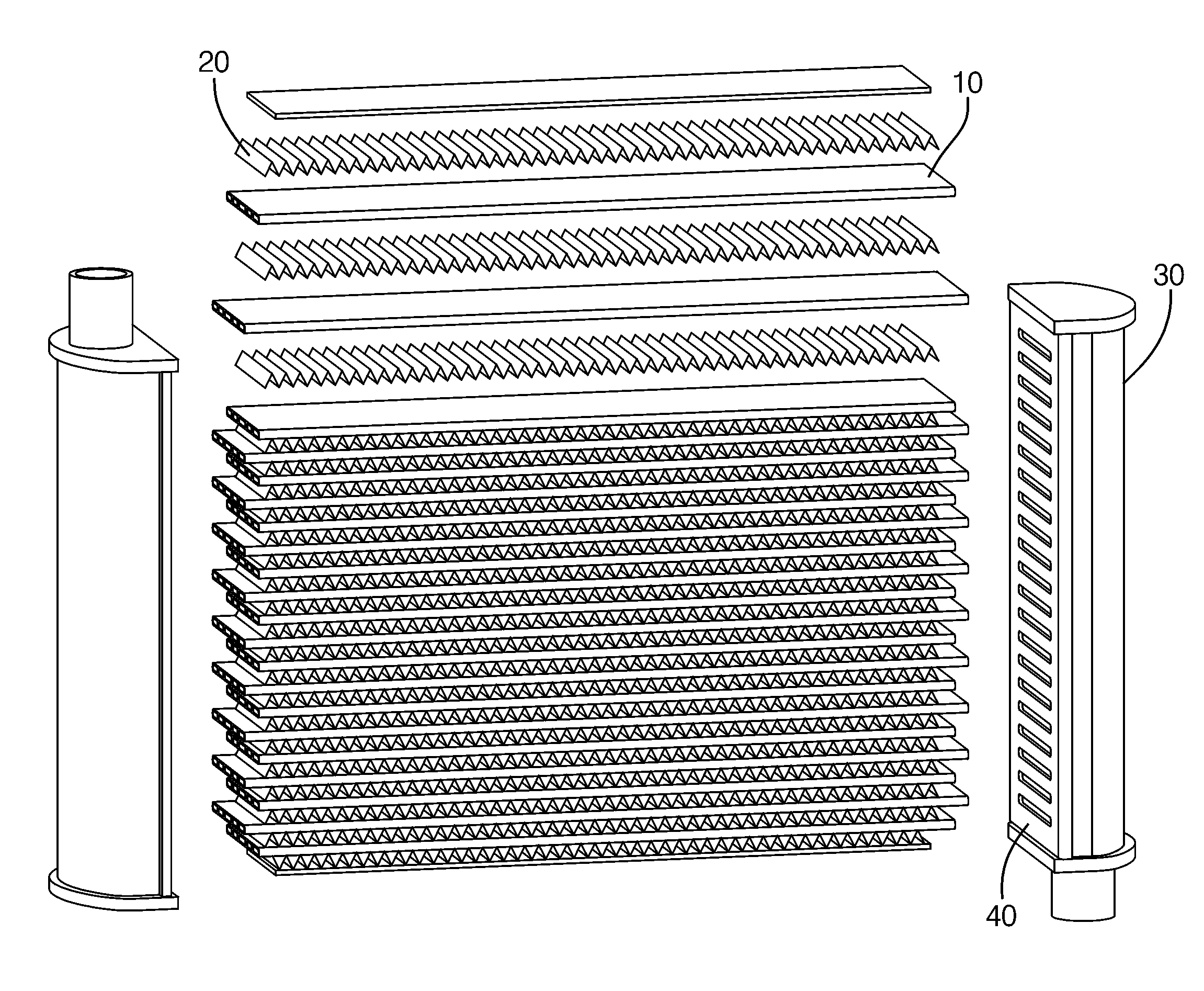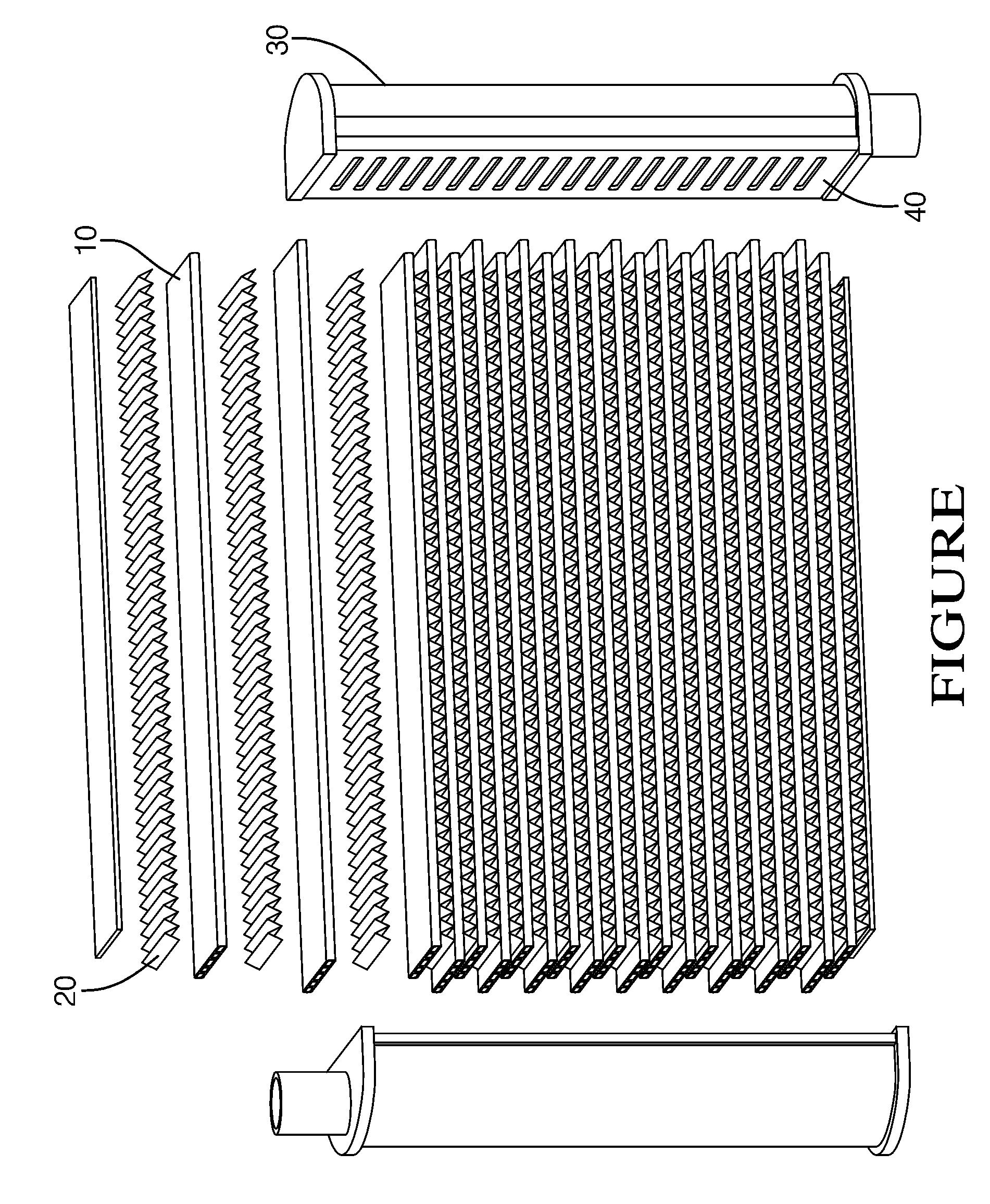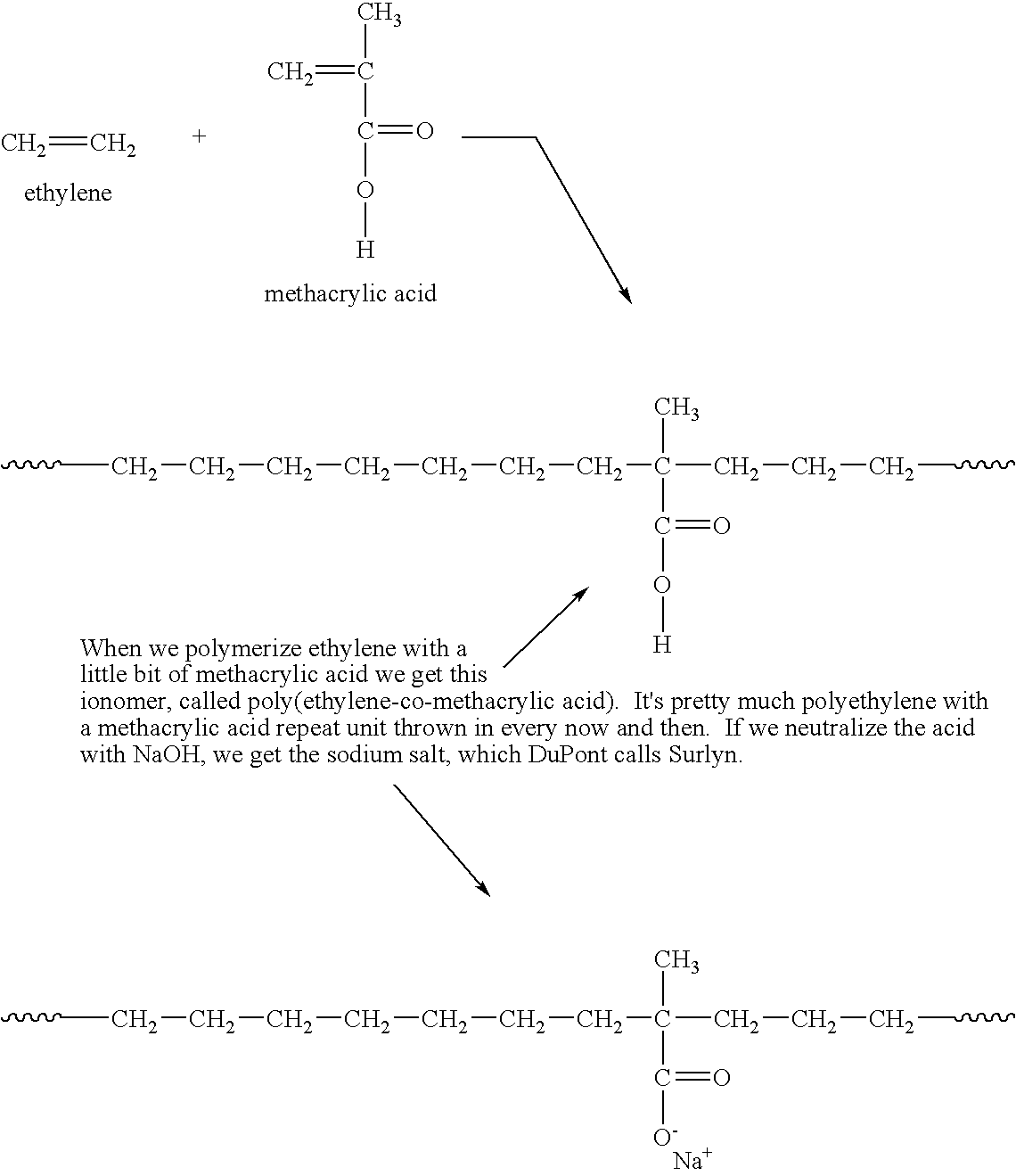Method of Making a Hybrid Metal-Plastic Heat Exchanger
a heat exchanger and metal-plastic technology, applied in indirect heat exchangers, lighting and heating apparatuses, other domestic objects, etc., can solve the problems of poor corrosion resistance, high manufacturing cost, high brazing temperature, etc., and achieve simple heat exchanger design, high heat exchange efficiency, and low manufacturing cost
- Summary
- Abstract
- Description
- Claims
- Application Information
AI Technical Summary
Benefits of technology
Problems solved by technology
Method used
Image
Examples
Embodiment Construction
[0011]Shown in FIG. 1 is a metal-plastic hybrid heat exchanger that includes a plurality of plastic tubes 10, metal fins 20, plastic tanks 30 and plastic headers 40. Presented below are the design considerations in the selection of these materials as well as in the method of bonding the metal fins 20 and plastic headers 40 to the plastic tubes 10.
Selection of Plastic Tubes
[0012]Selection of the plastic tubes 10 is dictated by the desire to improve the corrosion resistance on the coolant side of the heat exchanger and to reduce the material cost of the heat exchanger. Since the thermal conductivity and the tensile strength of the conventional plastics are lower than those of metal, it is desirable that new plastic materials with improved strength and thermal conductivity be used. The tensile strength of the new plastic materials is comparable with that of aluminum suggesting that reasonably thin-walled plastic tubes 10 can be employed. However, the thermal conductivity of the new pla...
PUM
| Property | Measurement | Unit |
|---|---|---|
| temperature | aaaaa | aaaaa |
| melting point | aaaaa | aaaaa |
| operating temperatures | aaaaa | aaaaa |
Abstract
Description
Claims
Application Information
 Login to View More
Login to View More - R&D
- Intellectual Property
- Life Sciences
- Materials
- Tech Scout
- Unparalleled Data Quality
- Higher Quality Content
- 60% Fewer Hallucinations
Browse by: Latest US Patents, China's latest patents, Technical Efficacy Thesaurus, Application Domain, Technology Topic, Popular Technical Reports.
© 2025 PatSnap. All rights reserved.Legal|Privacy policy|Modern Slavery Act Transparency Statement|Sitemap|About US| Contact US: help@patsnap.com



